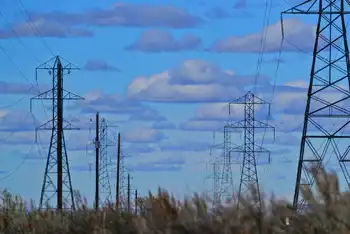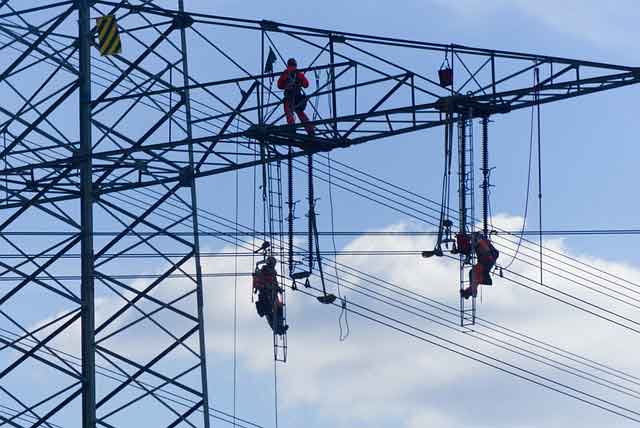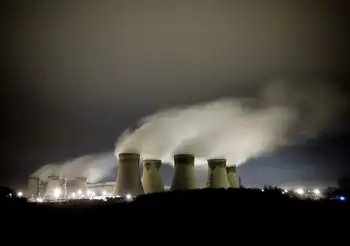Wisconsin regulators approve tighter mercury limits
By Associated Press
Arc Flash Training CSA Z462 - Electrical Safety Essentials
Our customized live online or in‑person group training can be delivered to your staff at your location.

- Live Online
- 6 hours Instructor-led
- Group Training Available
The provision would create the tightest limits on mercury ever adopted in Wisconsin. State air officials say the rule will mean cleaner air and make fish safer to eat.
But environmentalists have complained the rule is weak.
Businesses say utilities will have to spend tens of millions of dollars to comply, driving up electric bills.
"The... board just voted to significantly raise the cost of energy for every household and every business in the state," Scott Manley, environmental policy director for Wisconsin Manufacturers & Commerce, said in a statement.
Mercury, a byproduct of burning coal at power plants, can cause neurological defects and increase the risk of heart disease. It can especially accumulate in fish, and the DNR has warned people for years to limit consumption from any state lake, river or stream because contamination is so widespread.
The DNR four years ago adopted rules that required major utilities to cut mercury emissions by 75 percent by 2015. Democratic Gov. Jim Doyle ordered the agency during his 2006 re-election campaign to bump that up to 90 percent by 2018.
Under the proposal the Natural Resources Board approved 7-0 at a meeting in Waupaca, utilities must reduce mercury emissions by 90 percent by 2015. They could extend that deadline until 2021 if they can achieve a 70 percent mercury reduction, an 85 percent reduction in sulfur dioxide and a 50 percent reduction in nitrogen oxide by 2015. Sulfur dioxide and nitrogen oxide contribute to smog and haze.
The DNR estimates utilities will have to spend $38 million to $91 million annually to comply, depending on whether they choose the cheaper mercury-sulfur dioxide-nitrogen oxide approach or the straight 90 percent mercury option. That would mean another $5 to $12 more annually for the average homeowner, according to the DNR.
Minnesota requires 90 percent reductions by 2015. Illinois requires 90 percent reductions between 2009 and 2015 depending on how a utility chooses to comply.
Dan Kohler, director of environmental advocacy group Wisconsin Environment, said Wisconsin is moving too slowly.
"2015 or 2021 isn't soon enough," Kohler said. "Given the importance of our lakes and people's right to be able to take their families out and eat the fish they catch, we ought to address this problem now."
Wisconsin utilities have been working on projects designed to reduce sulfur dioxide, nitrogen oxide and mercury. But technology that could generate 90 percent reductions in mercury emissions is still evolving, they say.
Connie Lawniczak oversees environmental compliance for Wisconsin Public Service Corp., the utility that serves much of northeastern Wisconsin. She said the rule should have called for 90 percent only if the technology becomes viable.
"There is no technology we can go buy off the shelf to get us to 90 percent removal at all plants," she said. "That's a number that's in the future."
A coalition of business groups, including WMC, sued to block the rule, claiming the DNR didn't prepare a proper estimate of the rule's impact. A Dane County judge dismissed the lawsuit on Monday, saying an estimate on mercury reductions in 2005 was sufficient, even though it didn't address the current proposal.
Manley said the state shouldn't adopt standards stricter than the 70 percent mercury reduction the U.S. Environmental Protection Agency adopted. A federal court struck down those standards earlier this year, but Manley said that level is more realistic for the state.
DNR Secretary Matt Frank defended the rule, saying the multi-pollutant approach is cost-effective and the provision will save health care costs and protect the state's $2.3 billion fishing industry.
"It's a worthwhile investment," Frank said.
The rule now goes to the Legislature's environmental committees, which can object to it and send it back to the DNR for changes. Mike Bruhn, a spokesman for state Rep. Scott Gunderson, a Waterford Republican and chairman of the Assembly Natural Resources Committee, said the 90 percent figure looks arbitrary and the plan appears too expensive for ratepayers to bear.
"Everybody wants clean air and everybody wants clean water. But the last time I checked, I don't know too many who don't have the lights on in their house and aren't going to use heat in the winter," he said.











